Everyone is always talking about cooking with lard, tallow, and ghee these days, but in my mind, there is one fat that rules them all: BACON GREASE. Lard and tallow are inexpensive and great for high heat cooking, but don’t have much flavor. Ghee brings flavor to the table, but is too expensive to use for everyday cooking, and I don’t think it’s as good for high heat. Bacon grease checks ALL those boxes. It tastes great, can handle high heat, and its a byproduct of something you’re already eating anyway. You can use it to sear meat, make biscuits, cook eggs, make salad dressings, etc etc etc. There are no limits to what bacon grease can do, which is why I think it is the most essential oil.
Rendering bacon to get the grease seems very straight forward, but as a pork professional, I have some pro tips to share with you :)
TIP #1: Use bacon ends/fattier bacon. Sure, any bacon you cook is going to give off some liquid gold, but if you are rendering for the purpose of grease production, you’re not going to want to use super meaty bacon. As bonified baconators, we often have packages of bacon that are on the fattier side (each pig is different and don’t always muscle out the same), or wonky pieces that came from bellies that weren’t trimmed properly. This is a great way to use them! Bacon ends are also a fantastic candidate for rendering; they usually have more fat on them and are often less expensive than sliced bacon. As you can see, I used a pack of bacon that didn’t have much meat on it for this round of rendering. No matter what type of bacon you use, DO NOT THROW AWAY THE COOKED PRODUCT -even if you think it’s too fatty to eat. I promise it’s not; crispy fat is delicious and should be eaten or used in other recipes (it’s the star of our bacon cornbread recipe - coming soon).
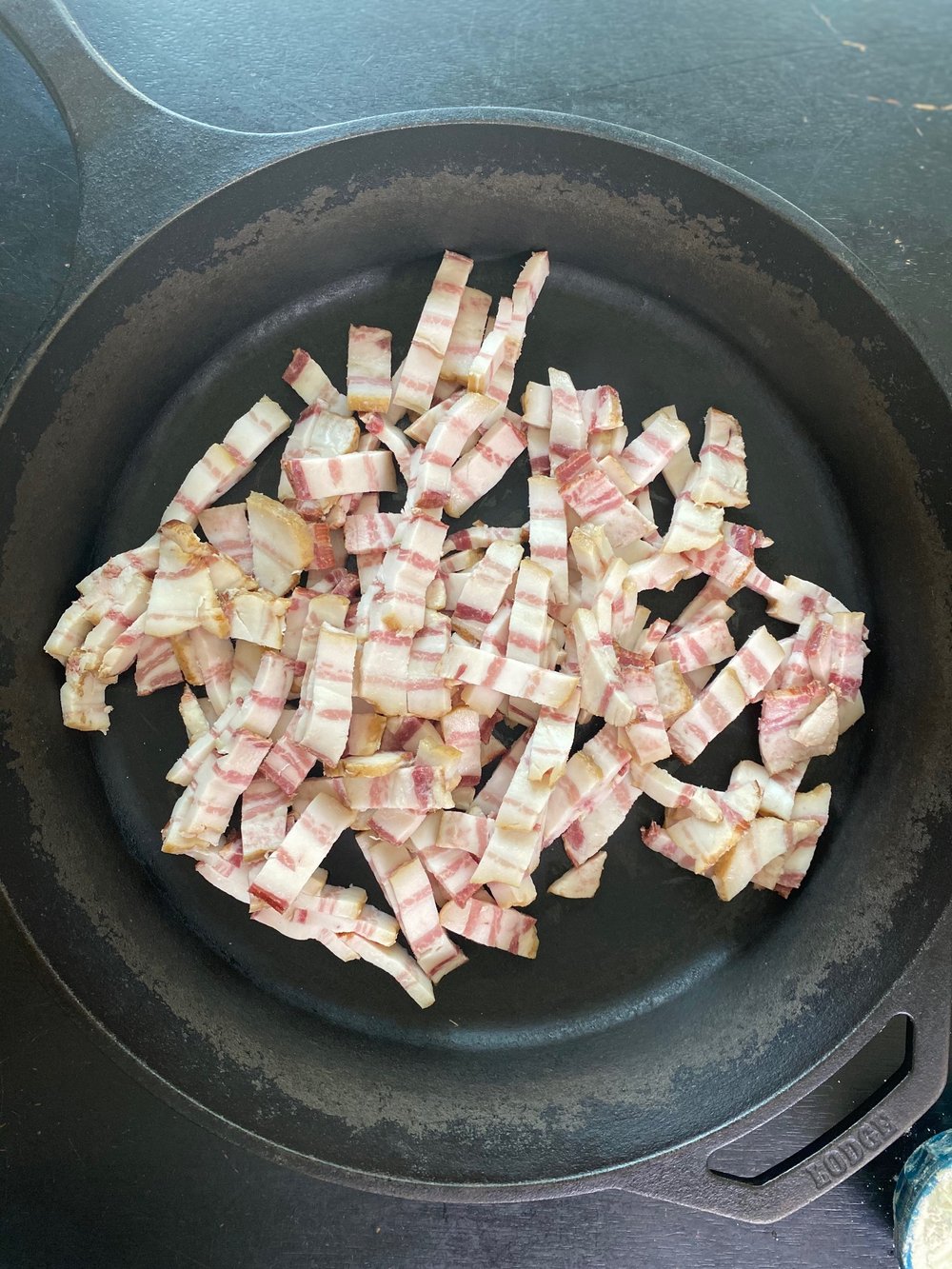
TIP #2: Slice the bacon when its still a little frozen. Bacon is slippery when it’s thawed, especially if its very fatty, and sharp knives and slippery fat can be a bad combo! For maximum rendering, its best to cut your bacon into smallish pieces, and If your bacon is a smidge frozen, it will be easier (and safer) to cut. I like to thaw it completely and then put it back in the freezer for 15-20 mins to firm back up.
TIP #3: Put it in a cold pan and heat it slowly. Heating the bacon pieces slowly will allow the fat to render out of it without the bacon cooking too quickly. If you cook it too high and fast, the bacon will burn before you get all the fat out. Slow and steady wins this race! You have to keep an eye on it though; it can go from good to burnt in the blink of an eye.

TIP #4: Use a glass jar for storage. This should go without saying, but hot fat and thin plastic containers don’t usually mix. I try to use glass for all my food storage needs, but especially for my essential oils. I like to reuse glass jars with wide lids for bacon grease (and other fats); that way I know I’ll be able to fit my spoon alllllll the way down in there. I lay a towel down and place my jar on top of it, in case there is any spillage while I’m pouring the grease in. Nobody wants hot fat pouring out all over their kitchen counters!
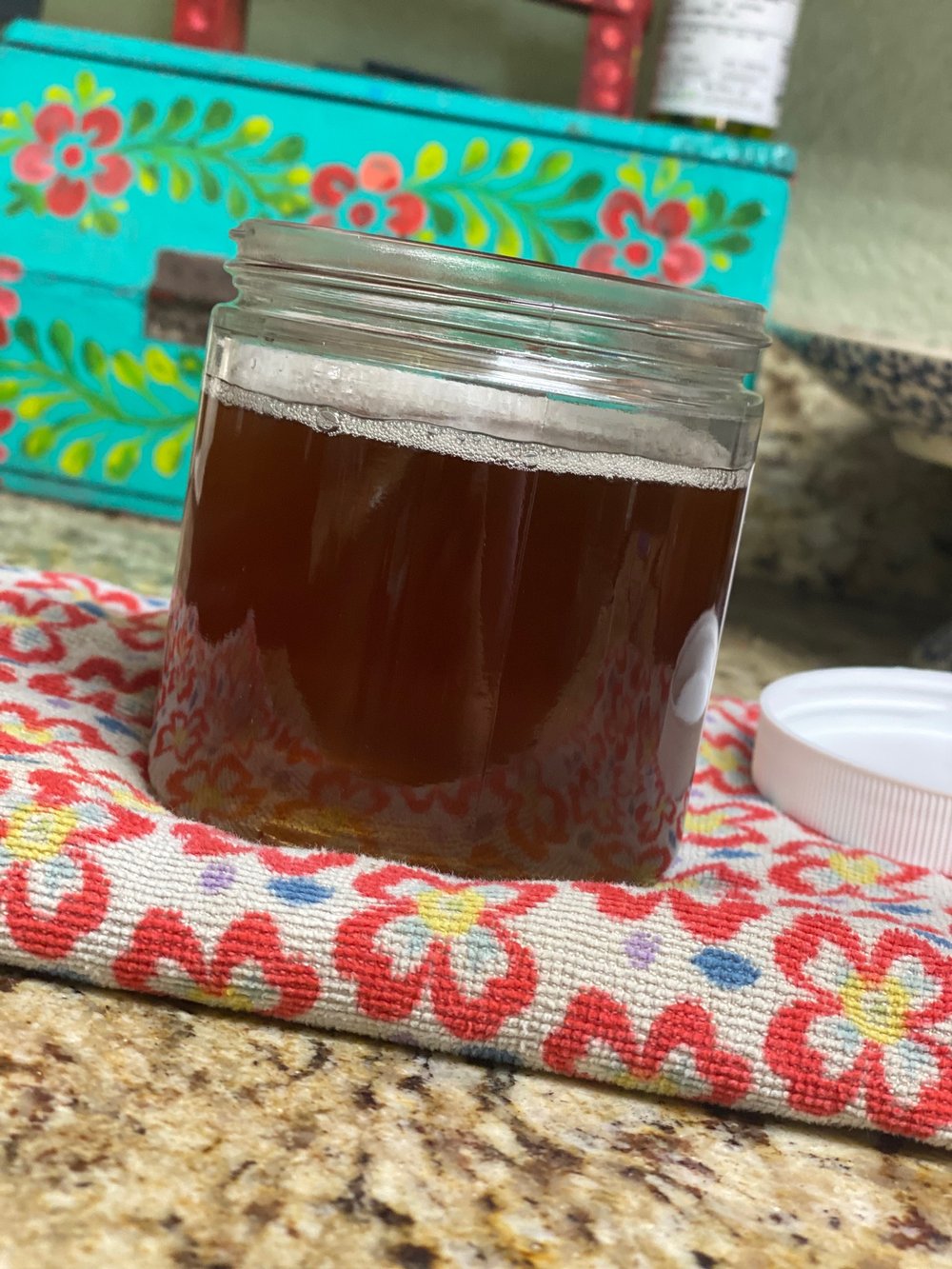
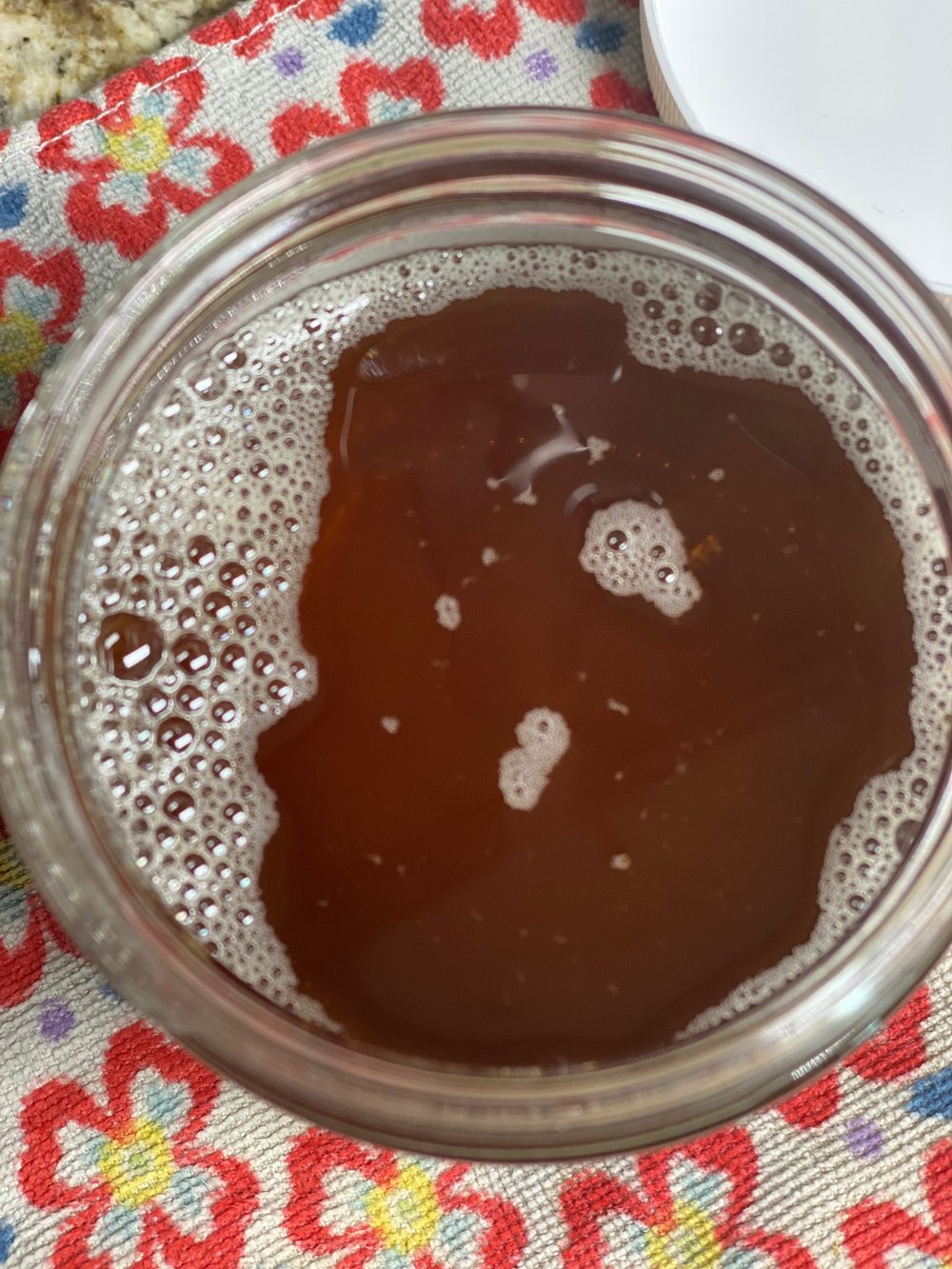
After your bacon grease is in the jar, all you have to do is let it cool to room temperature, put the lid on, and pop it in the fridge to solidify. Then go sit down to a big ol’ plate of crispy fried fat, and pat yourself on the back for all the work you put in!
Or, if you’re family is like mine, you’ll have to slap someone else’s hand out of your crispy fat reward plate…

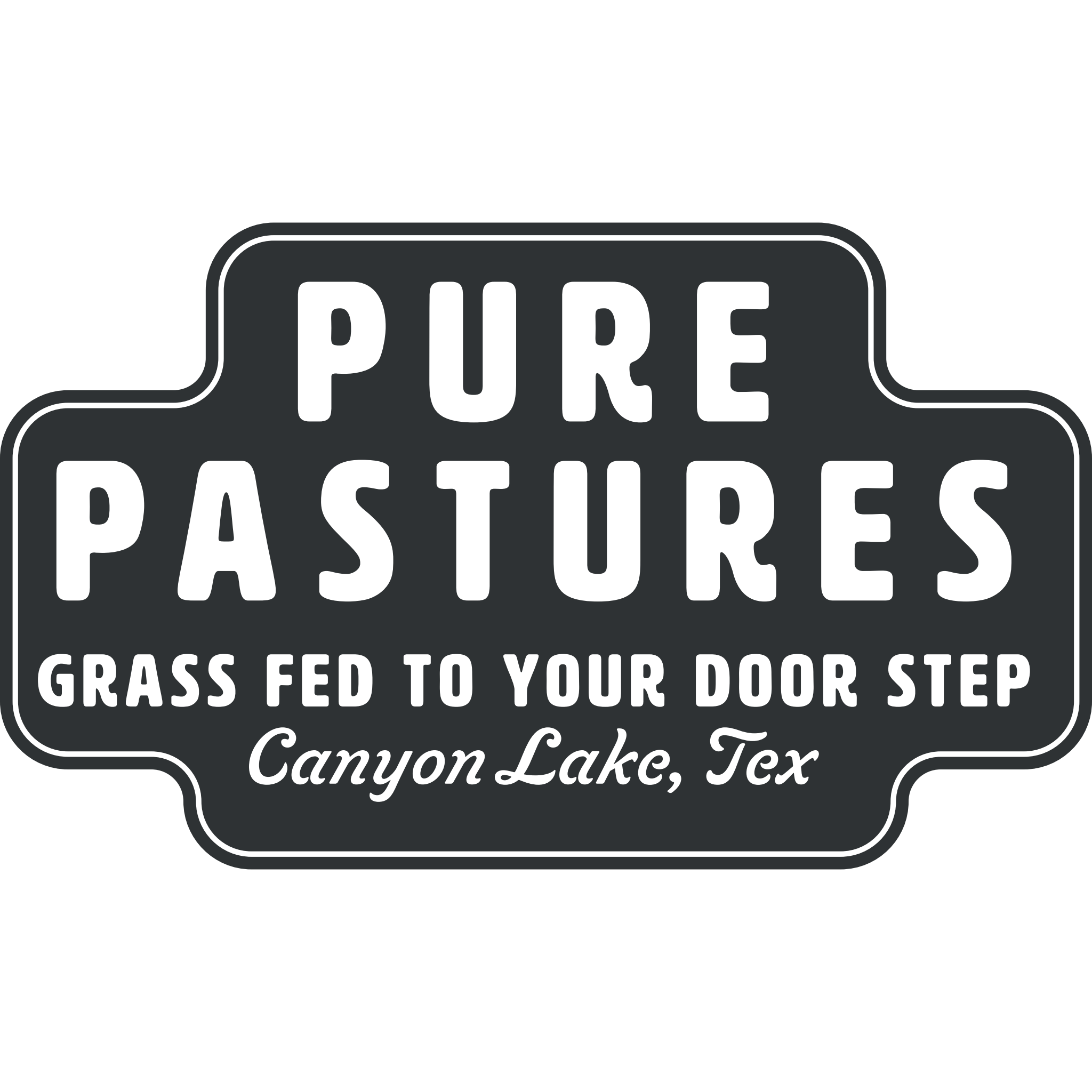
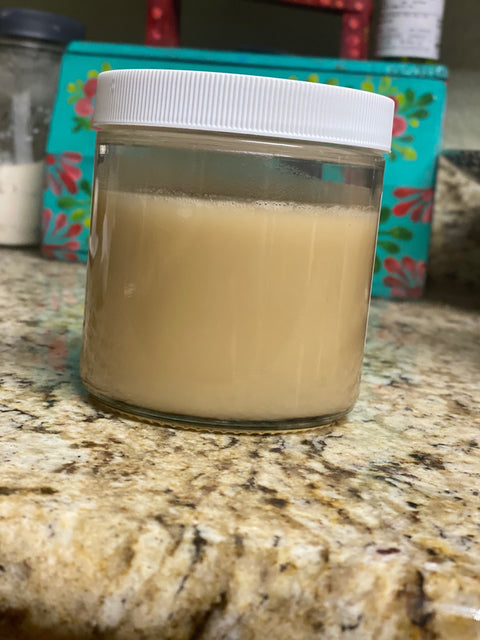
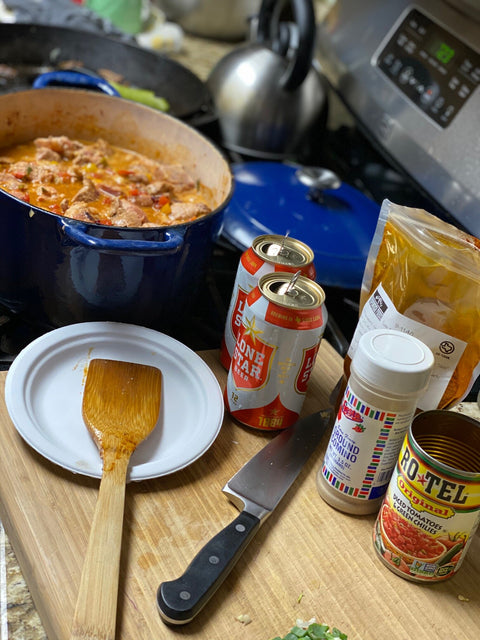
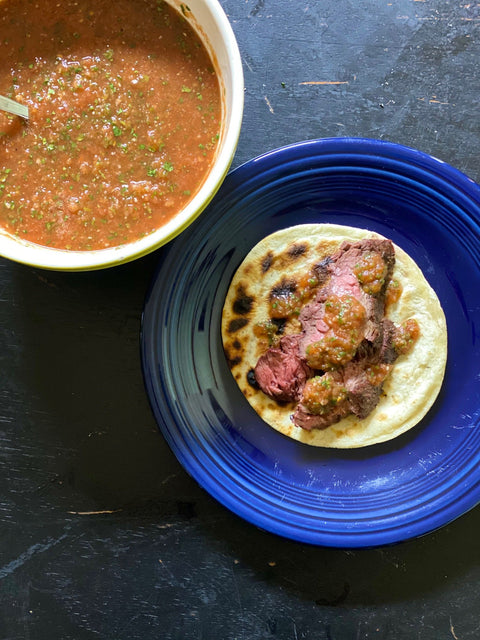
Comments (0)
There are no comments for this article. Be the first one to leave a message!